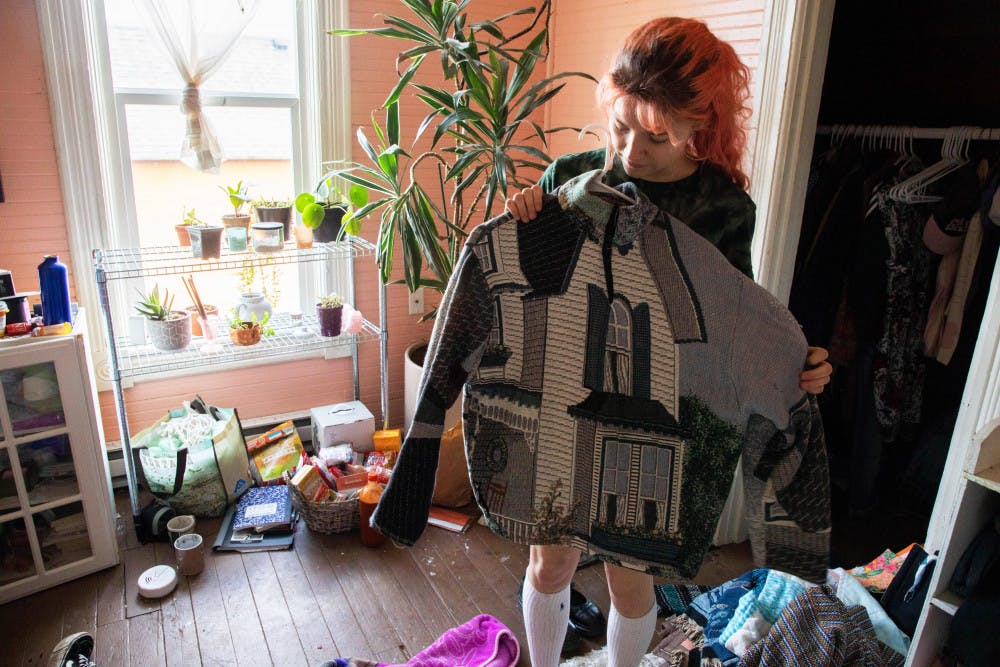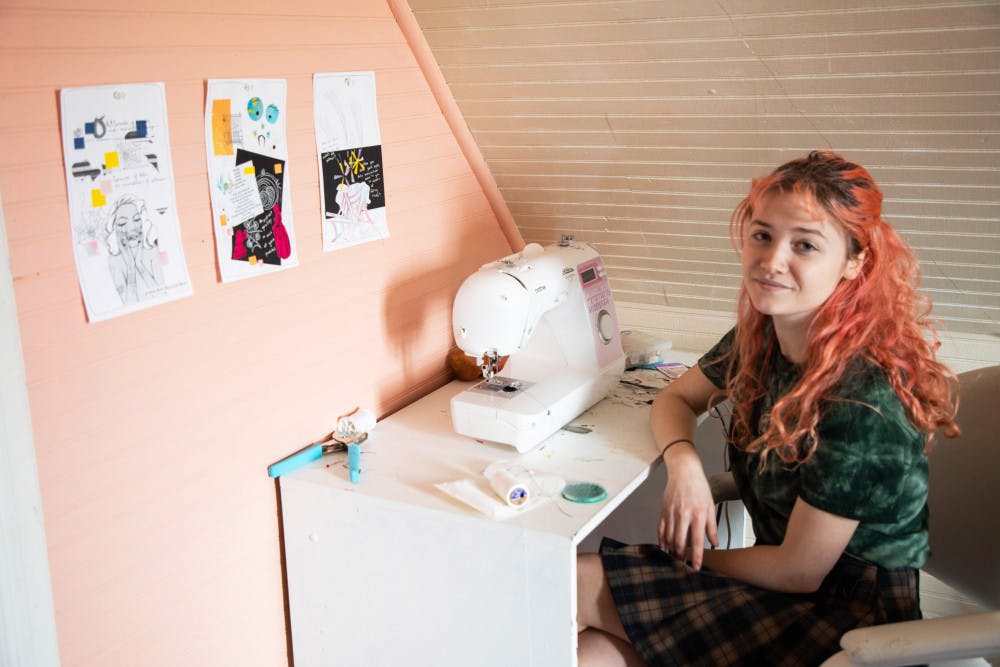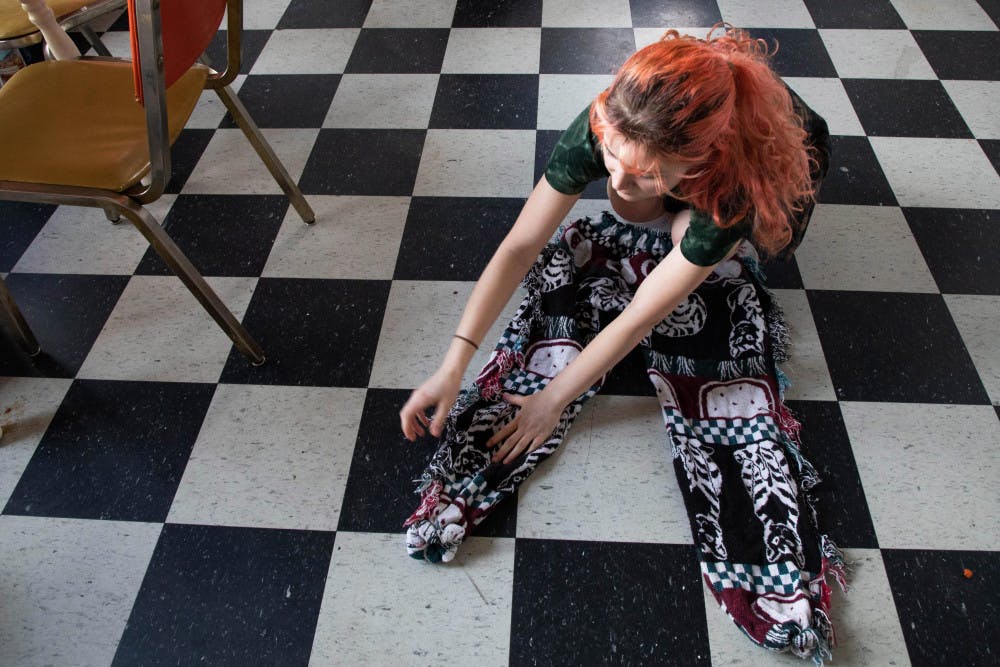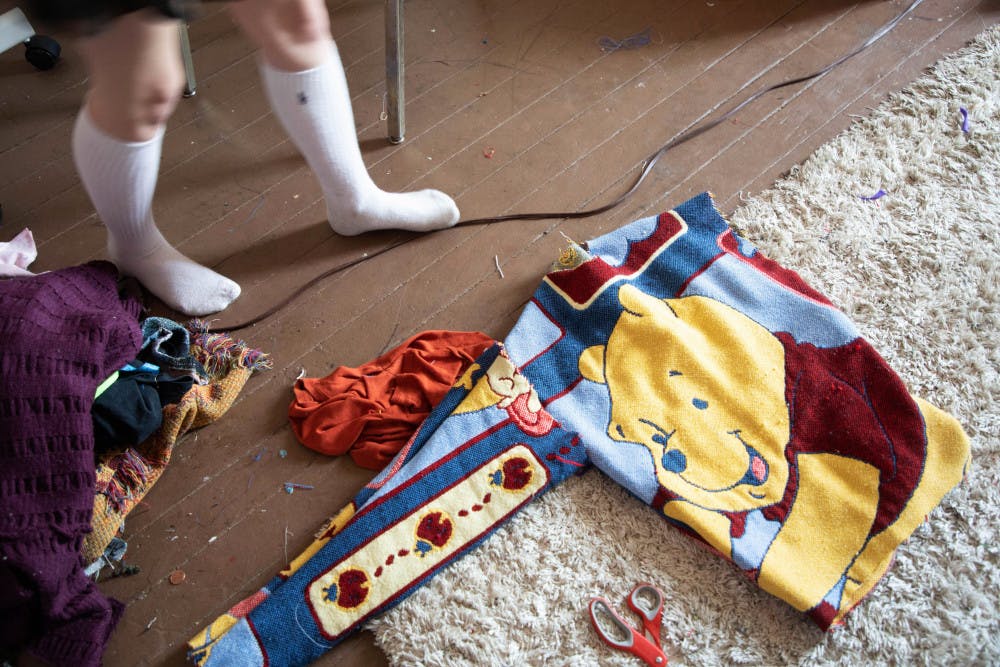
By Leora Watson
Sewing is making a comeback and local businesses like Social Fabric and Ragfinery have proof.
Renee Sherrer, 67, said she was taught how to sew by her mother growing up and fell in love with sewing and having the ability to express herself as a creative outlet.
Now Sherrer has owned Social Fabric for over five years and sewing is in her blood, said Kelly LaNois, a Social Fabric employee for the past two years.
Social Fabric is a three-part business, a boutique, textile art gallery and studio. Social Fabric offers various classes such as a children’s sewing class, private lessons and how to copy a garment course, according to LaNois.
People of all ages are becoming interested in sewing. Children as young as eight are coming into Social Fabric to learn how to sew, Sherrer said.
“Sewing instruction has skipped a couple of generations; we especially have a lot of very young girls that are just dying to start sewing and making things,” Sherrer said.
Sherrer said she has noticed more people are interested in making their own clothes now than when the store first opened in December 2015. Sherrer said part of this comes from the upcycle and DIY culture of Bellingham.
Upcycling is using discarded objects or materials to make something new, which often results in a higher quality item than the original, according to Habitat for Humanity’s website.
Sewing isn’t an easy skill to acquire, according to Sherrer.
“The thing about sewing is that it's an engineering process, you're just using a fluid material as opposed to something structurally sound like wood or metal,” Sherrer said.
LaNois said Social Fabric focuses on bringing the community together through sewing.
“I definitely think sewing is coming back, for sure,” LaNois said. “Sewing used to be an old fashioned thing but now I think that stigma isn’t there anymore, kind of a new wave of people that want to [sew].”
Another reason people are starting to make their own clothes is they are tired of the selections at stores and want custom fitting for their body type, LaNois said. People also want to get the most out of what they own and not have to purchase more or make changes to a thrifted item.
“We have a couple girls that are in their teens now that have been coming in for years,” LaNois said. “They come every week and have a class and they are working on a new project.”
LaNois said not a lot of Western students are doing the same due to busy schedules.
What attracts people to making their own clothes and sewing is having a way to express yourself, Sherrer said.
“It's part of being creative and defining who you are by how you present yourself,” Sherrer said. “At my age I was taught to sew, my mom taught me. Everybody learned to sew at my age, but then it skipped a couple of generations, and what we’re doing is filling in that hole of those generations.”
Ragfinery is another Bellingham textile store that has experienced an influx of people interested in textile crafts, according to Suzanne Carney, a Ragfinery employee.
Ragfinery’s mission is to divert unwanted textiles from the waste stream and repurpose them into a variety of upcycled goods. Ragfinery operates a training business that provides transitional jobs for low income clients from partnered social service agencies and schools, according to their website.
Suzanne Carney started working at Ragfinery last April as a textile associate. Carney, like Sherrer and LaNoise, said she has seen an increased interest in sewing.
Carney said one of the reasons why people are becoming more interested in making their own clothes is for sustainability and an interest in avoiding fast fashion.
The term fast fashion refers to cheaply and quickly produced garments that copy designer fashion and maximize on current trends. The fast fashion industry is one of the biggest in the world but it is also one of the biggest polluters, according to the University of Queensland Australia.
“It's really funny because we see an influx when the [Western] freshmen come in every year in the fast fashion stuff because everyone is like, ‘Oh, I get it now’ so they turn over their fast fashion stuff and start buying better quality things,” Carney said. “I enjoy seeing lots of fast fashion in these bags because we can move it along to people who need it.”
The fast fashion industry produces 10% of all carbon emissions and is the second largest consumer of the world’s water supply. 85% of all textiles go into the landfill each year, according to Business Insider.
Another benefit of someone making their own clothes is stress relief, Carney said.
“It can be a really meditative process for a lot of people,” Carney said. “A chance to focus on oneself.”

Mikhal Jensen started her own business, Katabasis, last summer which sells upcycled clothing items.
Jensen makes clothing from vintage blankets she finds at local thrift stores. Her business started after she made her boyfriend a pair of blanket sweatpants, inspired by a pair she saw on Depop, a social shopping app.
People stopped her boyfriend in the street to ask where he got his pants from. Jensen said she came to the realization she could sell similar clothing items.

While Jensen’s business originally began with local in-person transaction, the business has now moved to social media. Jensen now sells her clothing on Twitter and Instagram, and is currently making a website. Jensen has gotten orders from as far as New York, she said.
“Blankets have a unique design that’s specific for blankets though, so when you take designs that are made for one type of thing, even like curtains or placemats, and you apply them to clothes, it’s something that people haven’t seen before and that’s what really intrigues them,” Jensen said.
Katabasis has been so successful Jensen was able to quit her job and focus on making clothes.
“A big part of this for me is that I am pursuing a fashion style that’s surrounded by upcycling and being sustainable,” Jensen said. “To make really high fashion one of a kind pieces that are all made from previously owned stuff that would have gone to waste otherwise.”

People being more interested in making clothes in Bellingham is a combination of trying to be more environmentally friendly, loving to thrift and being enamored by unique fashion, Jensen said.
While Jensen is still making clothes strictly from blankets, she has started making other clothing types, such as vintage clothing spliced together with sections of blanket.
“I get to make money off something I really enjoy doing,” Jensen said. “I’m making people happy, more so than I would at a retail job.”





